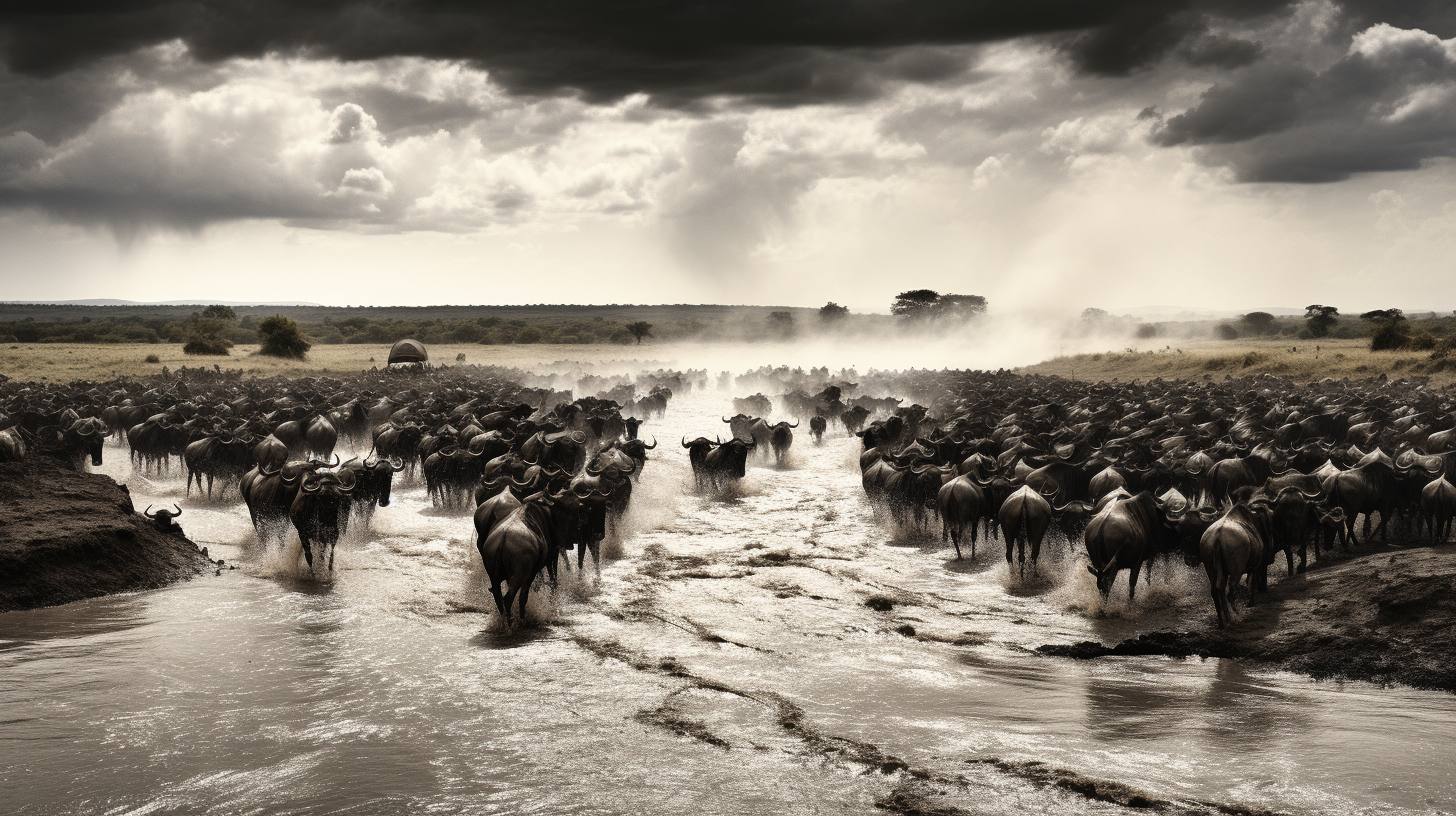In an epoch where the compass of humanity has long been set to the temperate havens in the North, a remarkable phenomenon is unfolding: the reversal of The Great Migration. This isn’t the chronicle of creatures bound by primal instinct, but of humans—driven equally by desperation and determination—retreating from scorched expanses to the antediluvian embrace of boreal sanctuaries.
Imagine seas clawing back inhabited lands with ravenous tides, deserts claiming cities with sandy claws, and the Earth’s verdant tapestries turning into barren sepia. Here, we bear witness to an unprecedented reverse exodus, as survivors of Terra’s temper tantrums forsake homes on the equator’s edge for the frost-kissed enclaves once deemed inhospitable.
The tale weaves through the withered fields of former breadbaskets and the abandoned husks of what were once coastal paradises. Sudden surges of refugees swell in the quiet towns of the North, bringing with them stories of razed lands, famished kin, and the persistent throb of loss. New words have entered our lexicon—‘climate fugitives’, ‘anthro-shift’, and the dire ‘re-habitat’.
As borders shrink under nature’s siege, tensions flare. Host countries grapple with the influx; some opening arms wide, while others raise walls, both literal and legislative. Yet it’s not merely a story of strife, but also of solidarity and unexpected synergies. Northerners find their lives enriched by the sudden diversity, their menus sprouting exotic spices, and their streets echoing with fresh dialects. This is no melting pot; it is a crucible where the formula for global kinship is being rewritten under the watchful eyes of Aurora’s dance.
And amidst this intermingling, innovation burgeons. Tech from the equator finds new vigor in the cold, sparking a renaissance in renewable energy and sustainable habitats. Agricultural paradigms shift as permafrost turns to periwinkle fields, signaling a tectonic shift in how we perceive and interact with the land.
Yet, even in this sanctuary, the specter of change looms large. As humanity congregates closer to the poles, the weight of our presence threatens to tip the scales once more. Cold climes grow warmer, and the fantasy of a pristine Arctic retreat dissolves into the stark reality of our global interconnectedness.
The Great Migration In Reverse is not just the relocation of populations, but the movement of ideas, the flux of culture, and the impermanent stamp of civilization’s footprints on the shifting sands of time. It’s a journey measured not in distance covered, but in mindsets altered; an odyssey written in the calligraphy of survival’s narrative, painting the big picture one small story at a time.
Our journey’s end remains unseen, cloaked in the mist of an uncertain future. But one thing is crystalline—the days of assuming permanence in place are gone, supplanted by the nomadic pulse of adaptation. We harbor no delusions. This migration heralds not an end, but an interlude—an intermission before the next wave of change, as inevitable as the tide and as unpredictable as the storm.
In closing, we reflect on this grand reversal, where humanity retreats not in defeat, but in the hope of finding a different kind of victory. A victory of resilience over resignation, of collective action over isolated struggle. It’s a saga in the making, an ongoing chronicle of our times, fueling a epochal question that haunts our generation: Will our environmental reckoning lead to reformation or merely mark a chapter in the annals of a perishing age?
